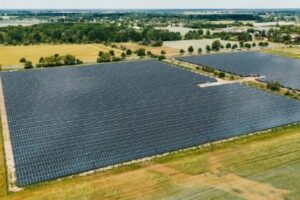The Role Of Chemical Solutions For Construction In Achieving Sustainability Goals

Ever driven past a towering skyscraper and wondered about its environmental impact? The construction industry leaves a big footprint. But there’s good news. Chemical solutions are emerging as game-changers in the race for sustainable construction.
From lower carbon footprints to energy-efficient buildings, these advancements are helping us build a greener future. Let’s dive into how chemical solutions are transforming the way we construct.
Chemical Solutions: Optimizing Construction with Efficiency
Ever poured concrete and wished it was easier to handle? Chemical construction materials are here to help. These specially formulated additives are revolutionizing concrete, making your life easier and the environment happier.
Let’s say you’re pouring a foundation. Concrete treated with admixtures flows smoother, requiring less effort to move and place. This translates to less wasted material and a faster pour, saving you time and money. Moreover, they give you more control over the concrete’s hardening process.
But it’s not just about convenience. Concrete admixtures can create a denser, more robust concrete structure. This translates to buildings that stand strong for decades, requiring fewer repairs and replacements. Less waste, less environmental impact.
Chemical construction materials are a game-changer for concrete work. They streamline the process, improve efficiency, and contribute to more sustainable construction practices. It’s a smarter way to build.
Lowering Your Carbon Footprint with Construction Chemicals
The construction industry isn’t exactly known for being kind to the environment. But there’s good news! Construction chemicals are becoming superheroes in the fight against climate change. Companies like Amicus Chemical Solutions are developing innovative products that help you shrink your carbon footprint on every project.
Here’s how these advancements are making a real difference:
- Geopolymer Concrete: This powerhouse material uses industrial leftovers, like fly ash, instead of relying heavily on virgin materials. Less reliance on new resources means less CO2 pumped into the atmosphere.
- Precast Concrete: Manufacturing concrete elements offsite in controlled environments minimizes waste and optimizes resource utilization.
Concrete admixtures ensure these precast pieces meet exact performance standards, thus reducing the need for on-site adjustments and material waste.
The benefits go beyond just concrete. Chemical solutions are revolutionizing how the construction industry build strong, sustainable structures.
Building for Durability: Chemical Solutions for Long-lasting Structures
Ever notice how some buildings crumble after a few decades, while others stand strong for centuries? The secret often lies in their construction. Chemical solutions are playing an increasingly important role in fortifying structures and ensuring they weather the storms—literally and figuratively.
- Waterproofing Warriors: Water is a building’s worst enemy. It seeps in and causes cracks, mold, and structural damage. Waterproofing compounds, formulated with cutting-edge chemistry, create a protective shield. Think of them as an invisible raincoat for your building.
- Corrosion Conquering Chemicals: Steel, a key structural component, can become a ticking time bomb if it rusts. Luckily, corrosion inhibitors act like tiny guardians, preventing rust and ensuring the steel maintains its strength for decades to come.
These are just a few examples of how chemical solutions are revolutionizing construction. By fortifying structures, they prevent costly repairs and replacements, saving you money in the long run.
Energy Efficiency: A Chemical Advantage in Construction
Ever crank the AC all summer and shiver in winter despite sky-high bills? Chemical solutions in construction can change that in the name of energy efficiency.
Advanced insulation materials, formulated with cutting-edge chemistry, are like invisible shields for your building. They keep the heat out in summer and trap it in during winter. The result? A cool haven in summer, a cozy retreat in winter.
Feeling comfortable shouldn’t cost the Earth. These innovative materials translate to lower energy consumption for heating and cooling. Smaller energy bills mean less strain on your wallet and the environment.
And it’s not just about insulation. Low-emissivity (Low-E) coatings for windows are another game-changer. Think of them like sunglasses for your building. They let natural light flood in while reflecting heat-causing infrared radiation. You get the sunshine you love without the unwanted heat. The result? A brighter, cooler space that’s easier on your energy bill and the planet.
Chemical Solutions for Sustainable Construction: A Range of Applications
The green magic from chemical solutions doesn’t stop there. These mixes have even more amazing applications for sustainable construction:
- Self-Healing Concrete: Can you imagine concrete that actually repairs its own cracks?! Scientists are cooking up special concrete loaded with healing agents trapped inside. When cracks form, those agents activate and seal them right up. Talk about extending a structure’s lifespan!
- Plant-Based Building Blocks: The construction world is exploring using chemicals derived from renewable plant sources for stuff like sealants and bonding agents. Cutting out fossil fuels means these materials have a way smaller eco-footprint over their full lifecycle.
Sustainable Construction: A Collaborative Effort in the Industry
Building green isn’t a one-person job. It’s a team effort. Everyone has a role to play—architects who design with sustainability in mind, engineers who find smart solutions, and construction crews who implement them efficiently.
Here’s how you can be part of the solution:
- Team Up with Sustainability Champions: Find architects and engineers who are passionate about sustainable design. Their expertise can help you incorporate green building practices from the start.
- Choose Green Materials: Look for building materials with high recycled content and a lower environmental impact. Every sustainable choice adds up.
- Waste Not, Want Not: Reduce waste on the job site. Proper planning and responsible disposal of leftover materials like curing compounds and repair mortars make a big difference.
Sustainability isn’t a fad—it’s the future. By working together, you can build a construction industry that’s innovative and minimizes our impact on the planet. Let’s make sustainability the new standard. It’s time to build a better tomorrow, together.

Chemical solutions used in the construction process to achieve sustainability goals, image source: Adobe
Chemical Solutions: Building a Sustainable Future for Construction
The construction game builds all the stuff that makes modern life possible—cities, houses, roads. But all that progress can take a tough toll on the environment. Luckily, chemical solutions are changing that old story. These super innovative mixes are helping us build smarter and greener.
Take concrete—the backbone material. Making it pumps out a ton of carbon. But concrete admixtures are flipping the script. Same strength with way less concrete needed. Using fewer natural resources leaves a smaller eco-footprint.
Building green isn’t just about using less though. It’s about using materials more cleverly, too. Geopolymer concrete is a total game-changer. It’s made from industrial leftovers and byproducts instead of fresh-mined stuff. A greener concrete mix for a sustainable tomorrow.
Final Thoughts
The future of construction is green, and it’s being built today. By choosing sustainable solutions, we can create a legacy of progress that protects our planet for generations to come. Join the movement. Ask your contractor about chemical solutions for your next project. Be a part of building a sustainable future, brick by sustainable brick.







